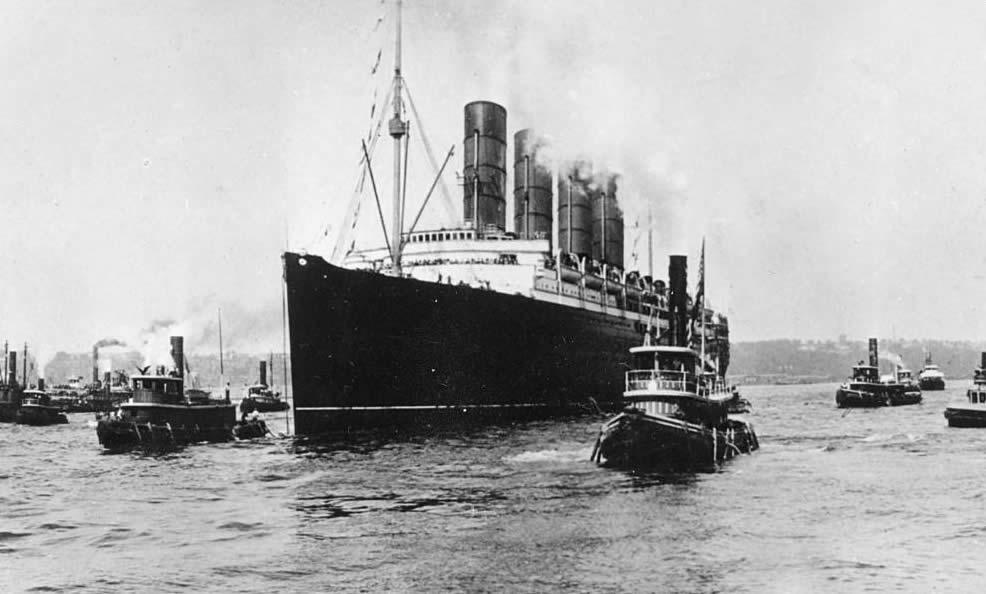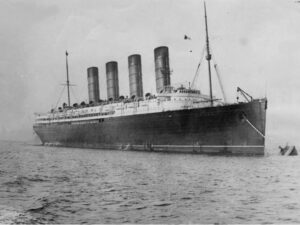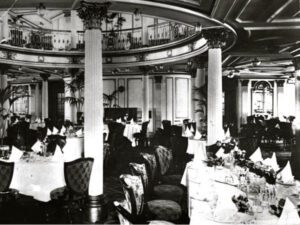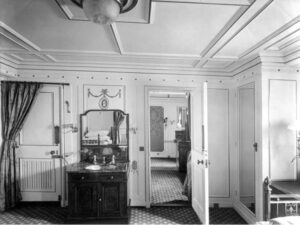Summary. Glasgow’s port expansion by 1900 boosted marine lighting businesses, with notable contributions from William McGeoch & Co. Our work shone aboard the ‘RMS Lusitania’, a prominent Cunard Line ship, tragically sunk in 1915. The Lusitania’s lighting epitomised Glasgow’s maritime industrial prowess.
Glasgow’s Port Evolution and the RMS Lusitania’s Lighting Legacy
For any Glasgow business interested in the supply of marine lighting and equipment, the growth of the city and surrounding districts into a port handling 7,000,000 tons of merchandise a year by 1900 was a good start for the new century. The Kingston Dock, opened in 1867, had been followed by the Queens Dock in 1880 and the Princes Dock in 1900. The Rothesay Dock was to follow in 1907, the year in which the ‘RMS Lusitania’ steamed out of the Clyde on her maiden voyage after being launched from John Brown & Co’s Yard Number 367 on 7th June 1906.
Furthermore, with a gross tonnage of 31,550, 787 feet long and with a beam of 87 feet, ‘RMS Lusitania’ was briefly the world’s largest passenger ship. Additionally, the Cunard Line commissioned her as one of two ships during fierce competition for the North Atlantic trade. William McGeoch & Co supplied many of her electrical fittings and lighting, as well as for her sister ship, the ‘RMS Mauretania’, launched a few months later.
Revolutionary new turbine engines fitted in both the ‘Lusitania’ and ‘Mauretania’ enabled a service speed of 25 knots. Equipped with lifts, wireless telegraph, and electric light, they offered 50% more passenger space than other ships, with their first class decks notably featuring sumptuous furnishings.
Pride and Tragedy: McGeoch’s Role in the RMS Lusitania’s Journey
Whilst on a McGeoch family holiday on the Isle of Arran in the summer of 1907, young Andrew McGeoch, great grandson of the founding father, spotted ‘RMS Lusitania’. He saw it in the distance from Whiting Bay and that his father pointed out with some relish and pride that McGeoch had supplied most of her electrical fittings and lighting.
Tragically, a German ‘U’ Boat torpedoed the ‘RMS Lusitania’ 11 miles off Ireland’s southern coast. This was during her 202nd trans-Atlantic crossing on 7th May 1915. This causing it to sink in 18 minutes and resulting in the loss of 1,198 passengers and crew.
Moreover, the archive photographs below shows ‘RMS Lusitania’ and various areas within it, all illuminated by electric light fittings designed and manufactured by William McGeoch & Co.
Click images to view …





